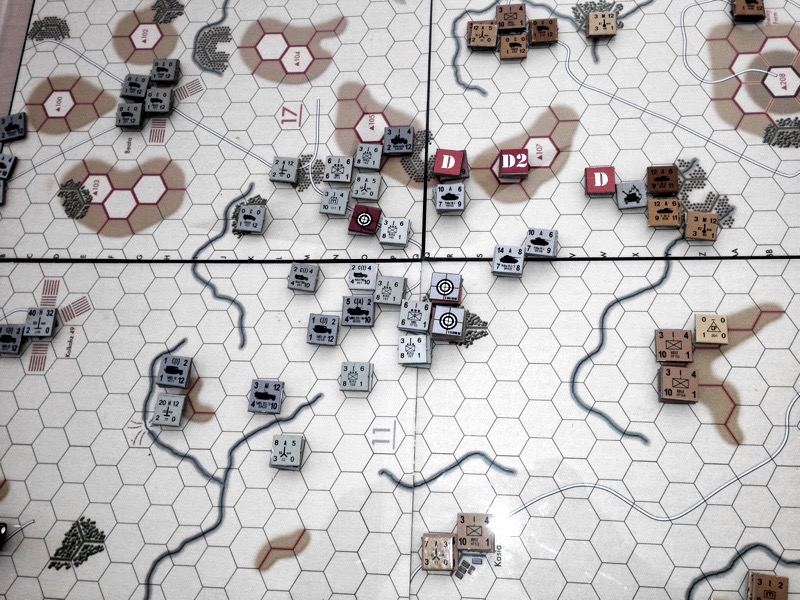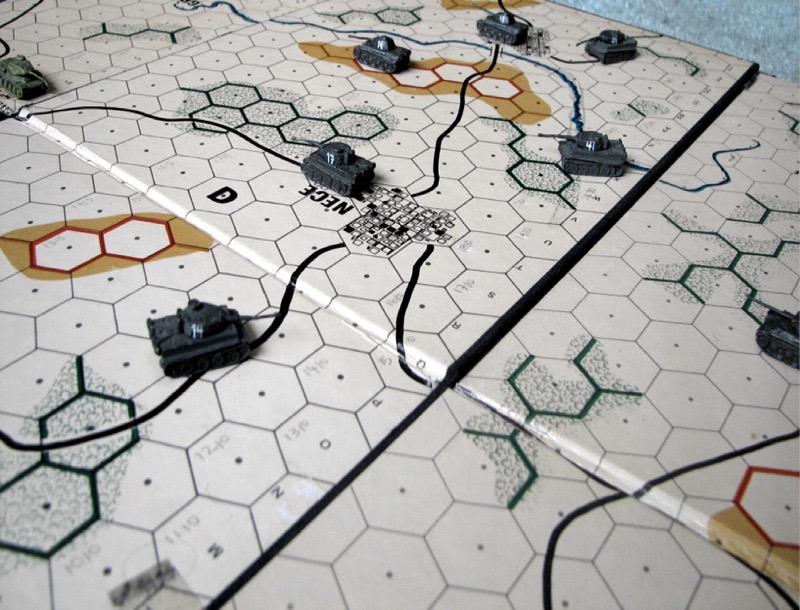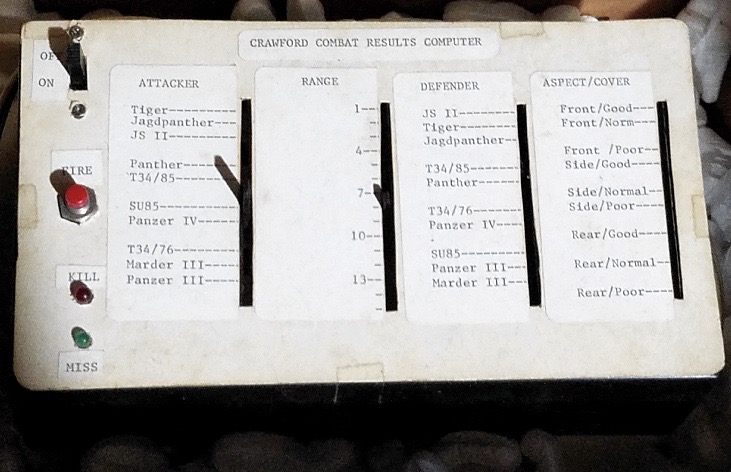June 27th, 2016
While I was in grad school in the mid-70s, my hobby was board wargames. These were strategy games played on a map broken up into a hexgrid (like chicken wire), and cardboard counters representing the military units. Here’s a photograph of one such wargame:

Just as every kid who plays videogames wants to be a game designer, back then, everybody who played board wargames wanted to be a board wargame designer. We all fooled around with variations. One of my pet peeves was the CRT: the Combat Results Table. This was a table cross-referencing the combat conditions — usually the ratio of force strengths — against a die roll. You figured out the odds, then rolled a die to see what happened.
This system had a horrible flaw: you gamed the odds. Victory in a game depended upon your ability to scrape together exactly the right forces for each battle to optimize your results. Wargames were more of an accounting exercise than a strategy challenge.
I came up with several partial solutions. One of these was a “Combat Results Nomogram” which allowed you to consult a graph that gave the precise results without having to sweat the round-off issue. If ever I find that nomogram in my attic, I’ll put it here.
But I later came up with an even better solution: a combat results analog computer. This was a simple circuit with linear potentiometers (sliders) that you could set to the combat conditions and it would calculate the combat results.
We used this on a tactical armored combat game that I set up using tank miniatures about centimeter long:

I had long since forgotten all of this, but a few days ago an old wargaming pal from those days sent me an email: apparently I had sold him one of my combat results calculators and he had saved it. He sent me a photo of the thing:

You operated it as follows: First you set the leftmost slider to correspond to the tank that was firing. Then you set the range in hexes, then you set the third slider to correspond to the defending tank. Lastly, you set the fourth (rightmost) slider to correspond to the combination of aspect (which way the tank was facing relative to the line of sight) and the amount of cover that the tank had. With all these sliders set, you pressed the “Fire” button and one of the two LEDs (red or green) would light up to show you the result.
I don’t have the circuit diagram for this, but I’m pretty sure that it had no active components — just the variable resistors. I must have used a small integrated circuit to light up the LEDs. I should have used a comparator to do that job, but I don’t think I was that knowledgeable back then. I don’t recall how that aspect of the design was handled.
I built this in 1975 or 1976.
